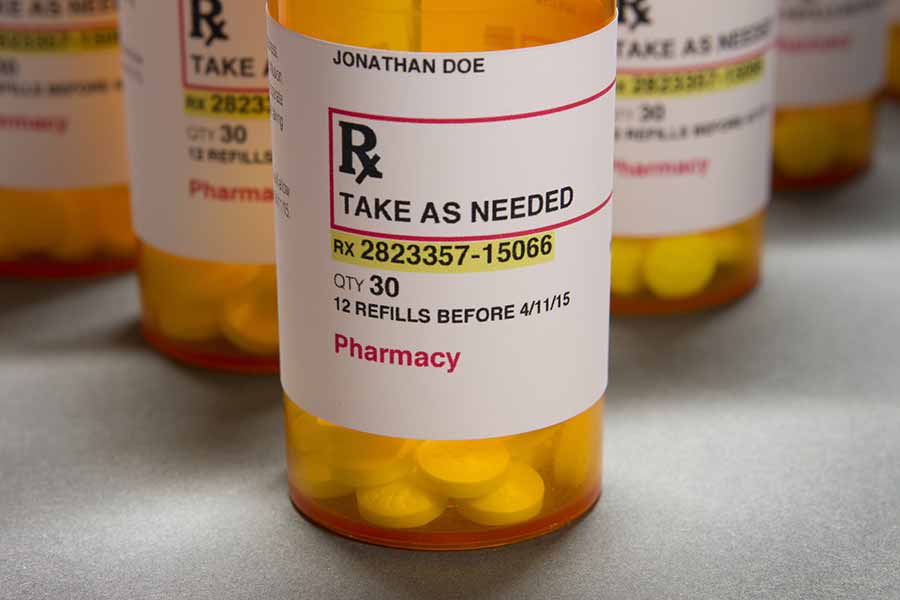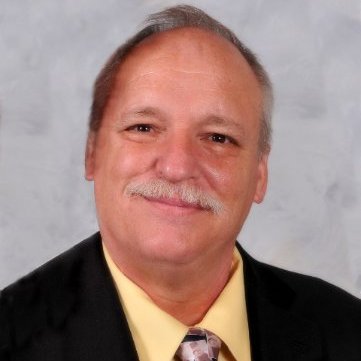Dream Journal
Note from Dr. B.

These goals should be re-assessed throughout the course of treatment to ensure that the patient is still experiencing significant improvement. The CDC recommends that patients start off their therapy by taking low doses of short-acting opioids. The use of high dosage and/or extended-release (long acting) opioids is risky and warned against unless the alternatives are ineffective. Additional precautions should be taken when increasing dosage to 50mg or more per day in morphine equivalents, and increasing dosage by 90 mg or more per day is strongly discouraged. Patients with acute pain should be given a minimal amount of pills initially, as studies have shown that a three-day supply is usually sufficient for non-traumatic instances. This policy would lower the likelihood of abuse and protect short-term users from addiction.
One of the most important factors of safe opioid use is continuing patient-physician communication. Providers should schedule a follow-up appointment within one to four weeks of starting a patient on long-term opioid therapy and/or increasing the prescribed dose. Additional appointments should be scheduled at least once every three months, and the risks and benefits of continued opioid use should be considered on a regular basis. Risk management strategies should continually be revisited and naloxone should be made available to patients in order to decrease the chance of opioid-related harm. Physicians should keep track of patient medication records and addictive tendencies to determine risk of overdose. High-risk patients should be instructed to take additional precautions and avoid drug combinations that could prove lethal. For example, patients taking benzodiazepines should avoid taking opioids concurrently whenever possible.
Physicians should also monitor patient drug use through regular urine drug screens. If evidence arises that a patient is suffering from opioid use disorder, the provider should arrange for enrollment in an evidence-based treatment plan. These typically involve opioid-agonist therapy along with behavioral and talk therapy. Patients with chronic pain have responded to these guidelines with disdain, arguing that the CDC is imposing restrictions unreasonably. The FDA is typically responsible for ensuring safe drug prescription, but the CDC is stepping in to regulate the spread of opioids anyway, claiming that these guidelines were reviewed by experts and will significantly reduce overdose deaths. Activists in the pain community argue that these rules are hardly going to affect death rates and will only make life harder for legitimately suffering chronic pain patients. The guidelines will likely be published in January 2016 and the CDC is not taking questions about them at this time. While the CDC’s plan may be well intentioned, it is an insufficient and misguided attempt to affect change without improving patient care.
A majority of opioid users become abusers because of inadequate treatment, not because of loose controls; for example, many turn to the streets for drugs when they are not being prescribed the correct medicines or dosages to manage their pain. The CDC guidelines are focused on regulations and restrictions instead of quality of care, a decision that is only going to exacerbate the opioid overdose problem. Pain treatment is a holistic process, and an ideal recovery scenario includes physical therapy, occupational therapy, therapeutic recreation, psychological services, pain education, relaxation training, vocational rehabilitation, and finally medical management. Instead of limiting the options that are available to patients, the CDC should be raising awareness about the various treatment possibilities that exist. Perhaps the country will see a decrease in opioid abuse once patients have access to the care they desperately need.
Source Cited: http://www.painnewsnetwork.org/stories/2015/9/16/cdc-opioids- not-preferred-treatment-for-chronic-pain
Monthly Tradition
“Tradition Eleven- “Our public relations policy is based on attraction rather than promotion; we need always maintain personal anonymity at the level of press, radio, and films.””
“We live in a world that advertises everything from political thoughts to material goods, from health products for better living to beauty products for vanity. Advertising dominates our culture and leaves individuals confusing “wants” with “needs.” We are bombarded with ads until we feel distrust about certain products and services. I wonder how the founding members of Alcoholics Anonymous and A.A. World Services had the insight to resist promoting Alcoholics Anonymous in the 1940’s?
We in the A.A. community have all heard about founder Bill Wilson wanting to open a hospital for alcoholics under the A.A. name, and how Alcoholics Anonymous and the Rockefellers came to an understanding that accepting a financial grant would not be in A.A.’s best interest. How, though, did the pioneering A.A. members have the self-restraint to not promote their group, even knowing it would provide much needed revenue? I feel that anonymity was the main reason for not promoting Alcoholics Anonymous, though I’m sure there were other reasons as well. When I was two years sober, I thought it was my job to talk about the gifts of being sober to people suffering from drug/alcohol abuse. I was promoting recovery, but none of the individuals I confronted sought help for their chemical abuse issues. I spoke to many individuals in the 12- Step fellowships about this, and they asked me to put myself in abuser’s shoes: if I were using mood- altering substances and someone randomly told me about sobriety and their spiritual gifts, would I stop using? I answered, “probably not.”
I stopped promoting recovery and the oddest thing happened: I began to notice more individuals coming to me to ask how I got sober. I feel that the founding fathers of A.A. recognized that by simply living a life based in recovery principles we can be of service to others. This is referenced in the Big Book of Alcoholics Anonymous when the author acknowledges that one of the key traits of alcoholics is “defiance.” If I promote recovery to an individual in active addiction, won’t his trademark defiance continue his suffering? I know now that I can be of service by simply holding myself responsible for my own recovery and taking my own moral inventory.
Monthly Tradition
The 11th Tradition.
SAMHSA (the Substance Abuse and Mental Health Services Administration) publically sponsors a ‘National Recovery Month’ every September. This month-long celebration promotes the benefits of treatment and emphasizes that a life in recovery can be healthy, fulfilling, and life-transforming. Thousands of individuals come together to share their personal stories with the public and counter the negative notions of shame and stigma that are often attached to addiction. During Recovery Month, the issue of privacy inevitably surfaces. Many argue that openly proclaiming ones sobriety goes against A.A’s cornerstones of confidentiality and personal anonymity. Others maintain that sharing their personal recovery story could encourage others to reach out and seek help when they might not otherwise do. In the context of the professional recovery sector, strong arguments suggest that we must maintain anonymity publically; that those still suffering with addiction can be better reached knowing that an umbrella of public privacy exists.
The 11th Tradition of A.A. is the foundation for many of these debates. A.A’s Twelve Traditions apply to “the life of the Fellowship itself; they outline how A.A. maintains its unity and relates to the world about it.” They are the basic organizational principles that A.A. follows. The related A.A. Twelve Steps are actions that can be practiced as a way “to expel the notion of drink and to enable the sufferer to become happily and usefully whole.” Essentially, the difference between the traditions and the steps is that the former is an organizational tool, and the latter is a set of personal suggestions/guidelines. The 11th Tradition states that: “our public relations policy is based on attraction rather than promotion; we need always maintain personal anonymity at the level of press, radio, and films”. This tradition governs anonymity with regards to ones membership in A.A. or any other twelve-step program.
This does not mean to say that one cannot speak about their recovery publicly, however many people mistakenly assume that to identify as ‘in recovery’ is a breach; everyone has a choice to go public with their personal story or to stay anonymous. The 11th tradition does not prohibit this choice of anonymity; it simply reminds us of the importance of the individual decision-making process. Whether one does or does not disclose their recovery status, and to whom they disclose the details, is a very personal matter. Talking about recovery is difficult for many because of perceived stigmas, fear of losing ones job, fear of losing the respect of others, etc. It is important to respect the challenges that addicts face in telling their personal stories, no matter which side of the debate you are on.
News Highlights
Healthy Role Models Making a Difference in Vermont
Rutland, VT was once notorious for its uncontrollable drug abuse, but is now becoming known as a community fighting back. Project Vision is a plan to reclaim the city in the name of safety and health by disrupting the drug trade markets. Citizens are coming together in troubled areas to throw block parties, hold discussions with residents, and offer help to addicts in need of mental health care. Since 2013, crime rates have dropped significantly, and an increasing number of drug users are seeking treatment.
Novel Chronic Pain Treatment Could Decrease Opioid Abuse
Scientists from Washington University School of Medicine in St. Louis and University of Illinois at Urbana-Champaign have been working together to design a piece of technology that could change the way chronic pain is treated. Researchers created an implantable device that uses micro-LED lights to activate surrounding nerves and prevent pain signals from ever reaching the brain. The device is flexible, and can therefore be inserted in many different parts of the body. More research is required, but this promising technology has the potential to greatly decrease the amount of opioid abuse seen in chronic pain patients.
Community
“For man, autumn is a time of harvest, of gathering together” – Edwin Way Teale. Here at Two Dreams Outer Banks, we believe in the importance of togetherness. Our community works hard each day, and so it’s nice when we can slow down with a stroll on the beach or a bike ride through the neighborhood. Last month we enjoyed running through the haunted trails at Wanchese Woods, picking out our own pumpkins at the Grandy Greenhouse, and playing a competitive game of paintball at OBX Paintball, but the fun doesn’t stop there! This month we also already have some fun activities on the calendar: fishing at Jennette’s Pier, trying our luck at reeling in a Grouper or Bluefish, high-speed racing on the tracks at Paradise Fun Park; enjoying a Gratitude Dinner; and last but not least, hosting our Annual Two Dreams Friends and Family Thanksgiving Dinner. Nothing is more humbling than gathering together and giving thanks for today. With that, our Two Dreams Outer Banks Team would like to wish you and yours a Happy Thanksgiving!
The 3P’S
Mental peace – physical well-being – personal productivity
Reverence-Respect Mental Peace: Oftentimes in the midst of active addiction we are unable to be true to ourselves, and therefore cannot find mental peace. In recovery, we are no longer weighed down by burdens and guilt from addiction. After recovery, we can say that we know who we are and have found mental peace. Others can see our state of mental peace through our attitudes and actions, as well as through the way we carry ourselves.
Physical Wellbeing: We must realize that to be wholly healthy, we cannot just attend to our mental health, but must also attend to our physical health and wellbeing. When we begin to see the benefits of taking care of our bodies we become motivated to continue that self-care. People notice the changes that we are experiencing. They see the benefits through changes in our physicality.
Personal Productivity: We attract individuals who are in recovery through our health and wellbeing. We help those who are suffering by serving as an example of good health, and through our actions we further improve ourselves. We are personally productive in recovery when we help others who are still struggling. We attract those individuals without promotion, as the 11th tradition suggests. Quote: “Health is a state of complete harmony of body, mind and spirit. When one is free from physical disabilities and mental distractions, the gates of the soul open.” ~B.K.S. Lyengar
Staff Highlight- QA with Jay Norton
Q. What is your current position and job description?
A. I am the Outreach Coordinator for Two Dreams Outer Banks. I am busy establishing relationships between other addiction professionals, families, and Two Dreams.
Q. Where did you work before Two Dreams and what did you do?
A.For over thirty years I have been a licensed electrician. I have also worked as both a volunteer and a staff member for several of the largest addiction conferences in the country.
Q. What has your journey been like at Two Dreams?
A. My journey has been one of immense gratitude and humility. We have a quality staff here, full of excellent workers and leaders in the field; I am grateful to be a part of it.
Q. What made you get into this profession?
A. My personal story was one of addiction and addictive behavior prior to 3-21-92, but since that day I have been attempting to “give back that which has been so freely given to me.”
Q. What is the most gratifying part of your job?
A. Working with the families of our clients is possibly the most gratifying part of my job. I am both a parent and a grandparent, so this part of my work really “speaks” to me.
Q. What do you like about the Two Dreams program?
A. The 3 P’s Mentality: our goal of achieving mental Peace, Physical wellbeing, and personal Productivity. I also like the passion and professionalism of the staff, as well as the fact that we offer such personalized care to our patients.
Q. Where did you go to college and post-grad and what did you study?
A. I went to Emerson College in Boston. I was a Mass Communications major.
Q. How would others describe you? How does your personality complement the work you do?
A. I can be described as quick with a joke and light on my feet. I live to be of service to others, and try to live my life with general truth and honesty.
Q. What do you like to do when not at work? What are your favorite hobbies?
A. I sing in several barbershop quartets and am a member of a barbershop chorus. I also keep myself busy with woodworking; I especially love turning bowls on a lathe.
Q. Anything else you would like us to know?
A. Just know that while my life is not unique, and while I may look like everyone else, I KNOW how blessed my life is. I’m grateful.
Adrienne’s Reflections
“Alcoholics anonymous has no opinion on outside issues; hence the A.A. name ought never be drawn into public controversy.”
“Our public relations policy is based on attraction rather than promotion; we need always maintain personal anonymity at the level of press, radio and films.” Alcoholics Anonymous is not a secret society. The A.A. Website (www.aa.org) has a wealth of information available and includes local resources to assist in finding A.A. group meetings. Accurate information about A.A. is provided by the General Service Office and local public and cooperation with the professional community committees. Literature and public service announcements are produced and approved by the A.A. membership through their General Service Conference. The intent of the produced material is to inform the public about what AA is, what it is not, and most importantly how to find and/or contact the group. A.A. members may individually choose to tell others (friends, neighbors, employers, co- workers, doctors, or spiritual advisors) about their membership in AA. Each A.A. member can decide how anonymous he or she would like to be, but anonymity at the public level is a different matter. Bill W, the co-founder of A.A, noted in his 1948 essay that breaking ones anonymity at the public level could be hazardous: “As individuals, we have sometimes believed that the public use of our names could demonstrate our personal courage in the face of stigma, so lending power and conviction to new stories and magazine articles.
No member ought to describe himself in full view of the general public as an AA even for the most worthy purpose…which would tempt others to do likewise for purposes not so worthy” A.A. members are said to be breaking their anonymity when they are identified as A.A. members on a public level. For example, when members appear on television and identify themselves as A.A. members (even without giving their name), they are considered to have broken their anonymity. Different safeguards can be used to preserve anonymity on camera: screens, silhouetting, discrete camera angles, shadowing, etc. By using these safeguards, members can take the focus away from their individual personality and move it to the A.A. program instead.
Over the years, some members have suggested that the eleventh tradition is outdated and should be amended. Bill W, being aware that the value or relevance of the traditions might one day be challenged, released a resolution in 1955 that stated: …none of the Twelve Traditions of A.A. shall ever be changed or amended by the General Service Conference except by first asking the consent of the registered A.A. Groups of the world. [This would include all A.A. groups known to the general service offices around the world.] These groups shall be suitably notified of any proposal for change and shall be allowed no less than six months for consideration thereof. And before any such Conference action can be taken, there must first be received in writing within the time allotted the consent of at least three-quarters of all those registered groups. In the early days of A.A., the press couldn’t understand the desire for personal anonymity at the public level.
Because A.A. has consistently demonstrated its willingness to publicize its principles and work, though not on an individual level, it has attracted many friends that include members of the press, professionals and clergy. With their help, the A.A. program is available to all who seek recovery from alcoholism. Most importantly, as Bill W once said, “the eleventh tradition is a practical reminder that personal ambition has no place in A.A.”
Two Dreams New Orleans
I had the pleasure of attending my first Fall International Treatment Centers Cooperative Conference sponsored by The Manor, The Gonzalez Family Residence, and Southworth & Associates in Vero Beach. The format allowed time for each facility to present information about their program to all of the attendees over the course of three days. This made for a more intimate setting than the traditional conference format; attendees could be better informed and establish closer, more productive relationships with others in the treatment industry. I feel fortunate to be part of a camaraderie whose goal is to work together to bring quality treatment to those who are suffering from substance abuse and other mental health issues. Our Two Dreams team will certainly benefit from the information gathered at the ITCC Fall Conference, and we look forward to continuing our distribution of up-to- date resources to our clients..
If you or someone you love feel that change is in order, please contact our Two Dreams office and we will be happy to guide you towards a more peaceful and meaningful life experience.
Two Dreams Chicago
This past month, Two Dreams founder Dr. Andrea Barthwell presented a talk for Millennium Health’s “Parents Academy” series. She explained that parents should help guide their children through young adulthood while allowing them to discover themselves in a safe, structured environment. Doing this, she said, helps to ensure that the kids will grow into successful and healthy adults. Dr. Barthwell’s inspirational lecture captivated the public viewers, as well as the employees of Two Dreams.
Thank you to our content contributors:
- Dr. Andrea Barthwell – Founder
- Jay Norton – TD Outreach Coordinator
- Phil Kosanovich- Guest Writer
- Nancy Davis – TDNOLA Community Outreach
- Aubrey Briggman – TDOB Admissions Director
- Jennifer Williams – TDOB Medical Case Manager
- Destiny McClain – TD Administrative Assistant
- Megan Crants – TD Clinical and Staff Writer
- Ivan Munoz – TD IT and Multimedia Support
- For admissions and all staff call us at: (504) 510-2331
© 2015 Two Dreams. All Rights Reserved.


